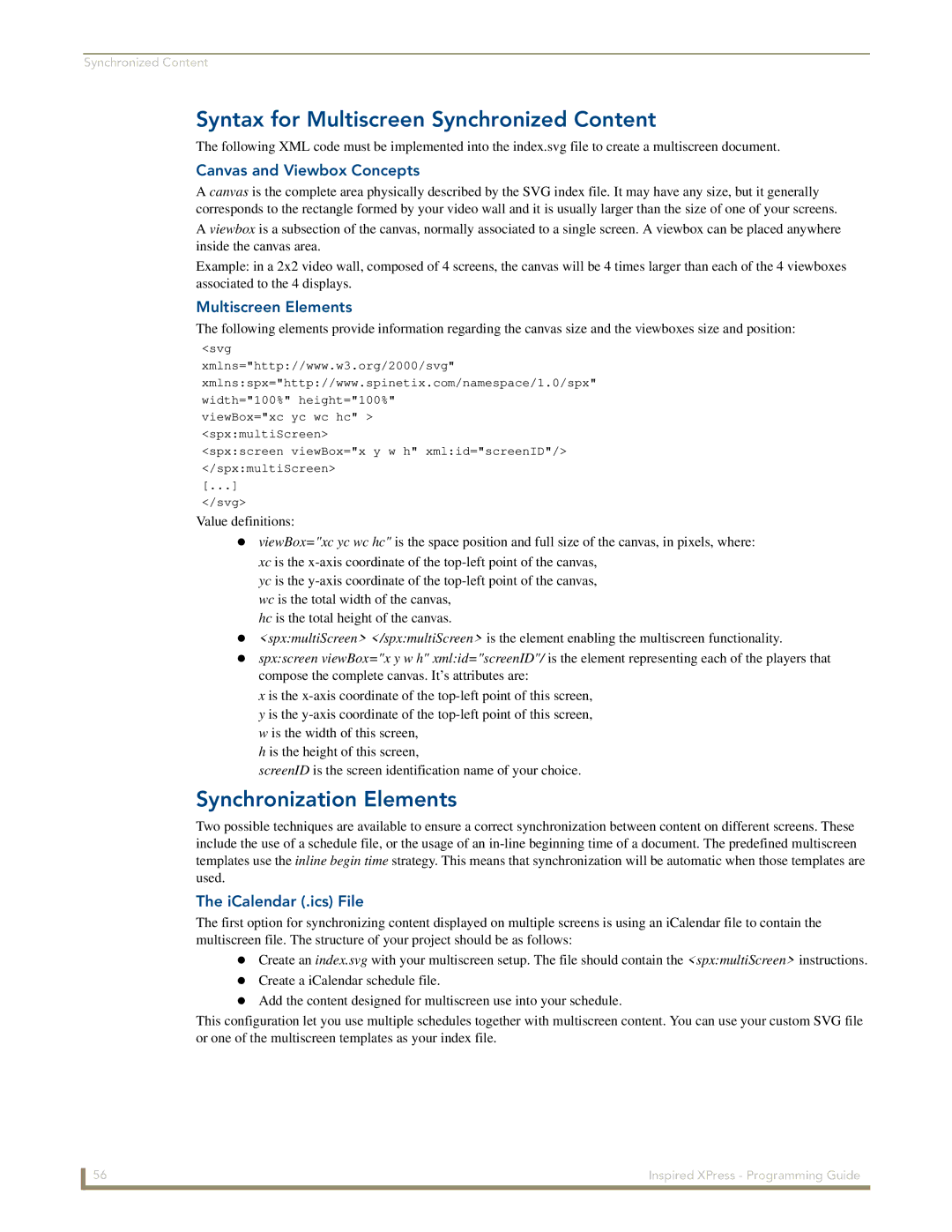Synchronized Content
Syntax for Multiscreen Synchronized Content
The following XML code must be implemented into the index.svg file to create a multiscreen document.
Canvas and Viewbox Concepts
A canvas is the complete area physically described by the SVG index file. It may have any size, but it generally corresponds to the rectangle formed by your video wall and it is usually larger than the size of one of your screens. A viewbox is a subsection of the canvas, normally associated to a single screen. A viewbox can be placed anywhere inside the canvas area.
Example: in a 2x2 video wall, composed of 4 screens, the canvas will be 4 times larger than each of the 4 viewboxes associated to the 4 displays.
Multiscreen Elements
The following elements provide information regarding the canvas size and the viewboxes size and position:
<svg
xmlns="http://www.w3.org/2000/svg"
xmlns:spx="http://www.spinetix.com/namespace/1.0/spx" width="100%" height="100%"
viewBox="xc yc wc hc" > <spx:multiScreen>
<spx:screen viewBox="x y w h" xml:id="screenID"/> </spx:multiScreen>
[...] </svg>
Value definitions:
viewBox="xc yc wc hc" is the space position and full size of the canvas, in pixels, where: xc is the
yc is the
hc is the total height of the canvas.
<spx:multiScreen> </spx:multiScreen> is the element enabling the multiscreen functionality.
spx:screen viewBox="x y w h" xml:id="screenID"/ is the element representing each of the players that compose the complete canvas. It’s attributes are:
x is the
h is the height of this screen,
screenID is the screen identification name of your choice.
Synchronization Elements
Two possible techniques are available to ensure a correct synchronization between content on different screens. These
include the use of a schedule file, or the usage of an
used.
The iCalendar (.ics) File
The first option for synchronizing content displayed on multiple screens is using an iCalendar file to contain the multiscreen file. The structure of your project should be as follows:
Create an index.svg with your multiscreen setup. The file should contain the <spx:multiScreen> instructions. Create a iCalendar schedule file.
Add the content designed for multiscreen use into your schedule.
This configuration let you use multiple schedules together with multiscreen content. You can use your custom SVG file or one of the multiscreen templates as your index file.
56 | Inspired XPress - Programming Guide |
